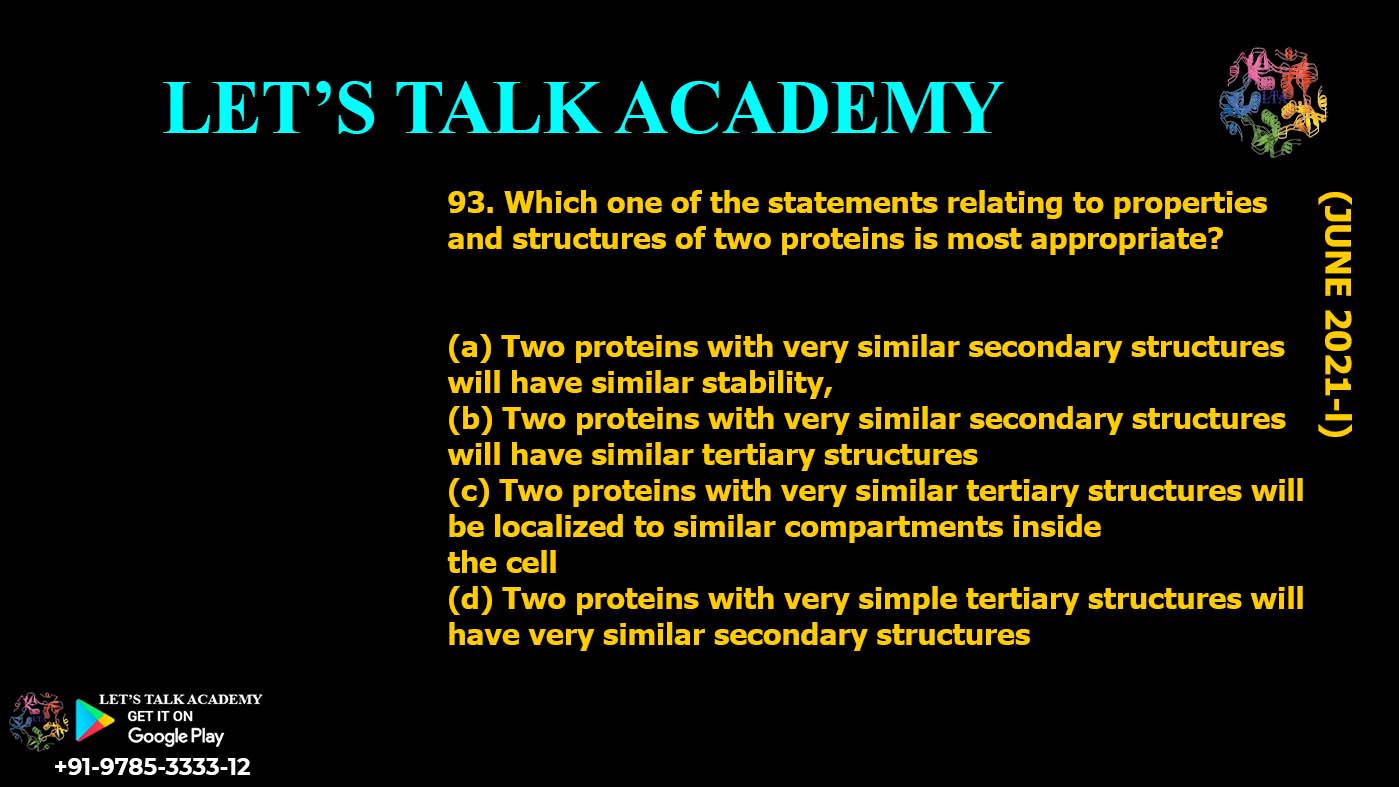Detailed Explanation:
Proteins are complex biomolecules with multiple levels of structure—primary, secondary, tertiary, and quaternary. Understanding how these structures relate to one another is essential for insights into protein function, stability, and localization.
Let’s break down the structural levels relevant to this discussion:
-
Secondary Structure involves localized folding patterns such as alpha-helices and beta-sheets formed through hydrogen bonding.
-
Tertiary Structure refers to the overall three-dimensional shape of a protein, formed by interactions among side chains of the amino acids.
Evaluating the Options:
(a) Two proteins with very similar secondary structures will have similar stability
Not necessarily true. Stability is more influenced by the tertiary structure and interactions like hydrophobic packing, salt bridges, and disulfide bonds. Two proteins may share secondary motifs but differ significantly in overall stability.
(b) Two proteins with very similar secondary structures will have similar tertiary structures
This is also inaccurate. While secondary structure elements are building blocks of tertiary structure, their arrangement in 3D space can vary widely. Hence, similar secondary structures do not guarantee similar tertiary structures.
(c) Two proteins with very similar tertiary structures will be localized to similar compartments inside the cell
This isn’t always true either. Protein localization depends more on signaling sequences and cellular context than just structure.
(d) Two proteins with very similar tertiary structures will have very similar secondary structures
This is the most accurate statement. If two proteins have similar 3D shapes (tertiary structure), it typically implies they are built from similar patterns of secondary structure, though some flexibility exists.
Final Answer:
(d) Two proteins with very similar tertiary structures will have very similar secondary structures



1 Comment
yogesh sharma
May 5, 2025Done sir
Thodi si typing mistake h sir